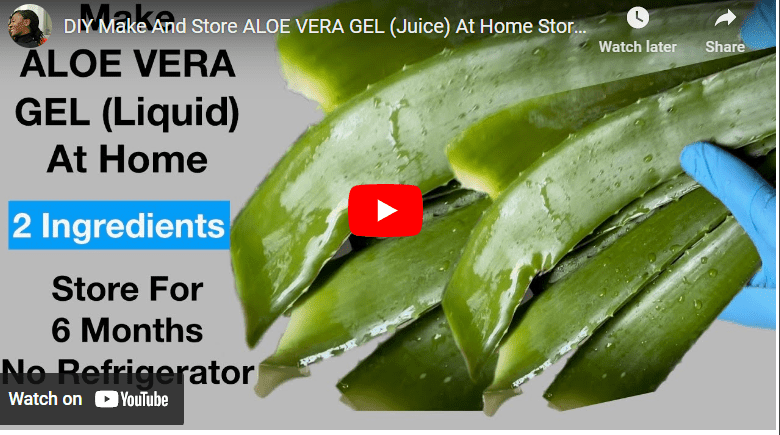Pig farming is an important economic activity in Ghana, providing income and food for many households. To ensure healthy growth and productivity of pigs, it is crucial to provide them with balanced and nutritious feed.
However, the formulation of pig feed can be a challenging task, especially for small-scale farmers who may not have access to high-quality feed ingredients.
This guide aims to provide practical advice on how to formulate pig feed in Ghana, taking into consideration the nutritional requirements of pigs, the availability of local feed ingredients, and the cost-effectiveness of different feed formulations.
By following these guidelines, pig farmers in Ghana can improve the health and productivity of their animals while minimizing their feed costs.
How To Formulate Pig Feed In Ghana
Learning how to formulate pig feed will let you have an endless supply of feed for your pigs. More so, you can commercialize the venture.
However, there are few things you need to know before you start formulating pig feeds. Interestingly, we have compiled all the step by step instructions below.
Read Also: How To Formulate Fish Feed In the US
Step 1. Determine the nutritional requirements of pigs
The nutritional requirements of pigs vary depending on their stage of growth and production. For example, growing pigs need more protein and energy than adult pigs, while lactating sows require more calcium and phosphorus.
Consult a pig nutritionist or a reliable reference book to determine the nutrient requirements of your pigs.
Read Also: How To Formulate Fish Feed In UK
Step 2. Identify available feed ingredients
Identify the feed ingredients that are available in your area and determine their nutrient content.
There are several local ingredients that you can use to formulate pig feed in Ghana. Here are some of the most common ones:
- Maize: Maize is a good source of energy for pigs and is commonly used in pig feed formulations in Ghana.
- Soybean meal: Soybean meal is a high-protein feed ingredient that is commonly used to supplement the protein content of pig feed in Ghana.
- Wheat bran: Wheat bran is a byproduct of wheat milling and is a good source of fiber and minerals for pigs.
- Cassava: Cassava is a starchy root vegetable that can be boiled and mixed with other feed ingredients to increase the energy content of pig feed.
- Groundnut cake: Groundnut cake, also known as peanut cake, is a byproduct of groundnut oil extraction and is a good source of protein and energy for pigs.
- Fishmeal: Fishmeal is a high-protein feed ingredient made from dried and ground fish and is commonly used in pig feed formulations in Ghana.
- Palm kernel cake: Palm kernel cake is a byproduct of palm oil extraction and is a good source of protein and energy for pigs.
- Rice bran: Rice bran is a byproduct of rice milling and is a good source of fiber and energy for pigs.
These ingredients can be combined in different proportions to create a balanced and nutritious pig feed that meets the nutritional requirements of your pigs.
Step 3. Analyze feed ingredients
Analyze the feed ingredients for nutrient content, including protein, energy, fiber, minerals, and vitamins. You can use a laboratory or a handheld nutrient analysis tool to do this.
Read Also: How To Formulate Fish Feed in Nigeria
Step 4. Determine the nutrient content of the feed mix
Use a feed formulation software or a feed chart to determine the amount of each feed ingredient needed to achieve the desired nutrient content of the feed mix. We recommend that you meet an expert to help you in this regard.
Step 5. Blend the Ingredients
It depends on the type of feed ingredients you are using. Some ingredients, such as maize and wheat bran, can be added to the mixer without any further processing.
However, other ingredients such as soybean meal, groundnut cake, and palm kernel cake need to be ground or milled before they are added to the mixer.
Grinding these ingredients will improve their digestibility and make the feed more uniform.
Read Also: [Beginners Guide] How To Formulate Fish Feed in Uganda
Step 6. Mix The Feed Ingredients
Mix the feed ingredients thoroughly to ensure that each pig receives the same nutrients. You can use a feed mixer or a shovel to mix the ingredients.
here are the steps to follow to mix pig feed:
step 1: Weigh The Ingredients
Weigh the required amount of each feed ingredient using a digital scale or a mechanical balance. Follow the feed formulation recipe to determine the amount of each ingredient needed.
Read Also: [Beginners Guide] How To Formulate Fish Feed In South Africa
Step 2: Thoroughly Clean The Mixing Equipment
Before mixing the feed, clean the mixing equipment thoroughly to prevent contamination. Use a brush and soapy water to clean the mixing equipment and rinse it with clean water.
Step 3: Add The Ingredients To The Mixing Equipment
Add the weighed ingredients to the mixing equipment in the correct order as specified by the feed formulation recipe. Start with the dry ingredients and add the liquid ingredients last.
Read Also: [Beginners Guide] How To Formulate Fish Feed In Ghana
Step 4: Mix the ingredients
Mix the ingredients thoroughly to ensure a uniform blend. You can use a feed mixer or a shovel to mix the ingredients. Mix the ingredients for at least 5-10 minutes to ensure that they are well combined.
Step 5: Check the moisture content
Check the moisture content of the mixed feed using a moisture meter. The moisture content should be between 12-14% for optimal feed quality and storage.
Read Also: [Beginners Guide] How To Formulate Feed For Snail
Step 7. Store The Feed
After mixing the ingredient, leave it to settle for a while. Afterwards, you can feed your pigs and then store the feed in a cool, dry, and well-ventilated place to prevent spoilage and contamination. You can use a feed storage bin or a clean plastic drum.
Step 8. Test The Feed
Test the feed periodically to ensure that it meets the nutrient requirements of your pigs. You can use a handheld nutrient analysis tool or send a sample to a laboratory for analysis.
Step 9. Adjust The Feed Formulation
Adjust the feed formulation as needed based on the growth and performance of your pigs. Consult a pig nutritionist or a reliable reference book for guidance.
Read Also: [Beginners Guide] How To Formulate Feed For Snail South Africa
Benefits of Formulating Pig Feed
- Cost savings: Formulating your own pig feed can be less expensive than buying pre-mixed commercial feed.
- Customizable: Formulating your own pig feed allows you to customize the feed to meet the specific nutritional requirements of your pigs.
- Control over ingredients: Formulating your own pig feed gives you greater control over the quality and source of the ingredients.
- Healthier pigs: Properly formulated pig feed can lead to healthier pigs with fewer health issues.
Read Also: How To Formulate Pig Feed In Kenya
Challenges of Formulating Pig Feed
- Nutrient balancing: Formulating pig feed requires an understanding of the nutrient requirements of pigs and how to balance those nutrients.
- Ingredient sourcing: Sourcing quality ingredients can be a challenge, especially in areas with limited availability of certain feed ingredients.
- Equipment and space: Formulating pig feed requires specialized equipment and space, which can be a challenge for small-scale farmers.
Read Also: [Beginners Guide] How To Formulate Feed For Snail In the US
Best Practices for Formulating Pig Feed
- Follow a recipe: Follow a proven recipe for pig feed formulation to ensure that the feed is properly balanced and meets the nutritional requirements of your pigs.
- Analyze ingredients: Analyze the nutrient content of each ingredient to ensure that the feed formulation meets the nutrient requirements of your pigs.
- Use quality ingredients: Use high-quality ingredients that are free from mold, toxins, and other contaminants.
- Maintain equipment: Regularly clean and maintain the mixing equipment to prevent contamination and ensure accurate mixing.
Read Also: [Beginners Guide] How To Formulate Feed For Snail In Nigeria
Disadvantages of Formulating Pig Feed
- Time-consuming: Formulating pig feed can be time-consuming, especially if you are not experienced in feed formulation.
- Equipment Cost: Formulating pig feed requires specialized equipment that can be expensive.
- Risk of Nutrient Imbalance: Formulating pig feed incorrectly can lead to nutrient imbalances that can negatively impact pig health and growth.
Where to Sell Pig Feeds
- Feed stores: Feed stores are a common outlet for selling pig feed.
- Farmer cooperatives: Farmer cooperatives may be interested in purchasing pig feed in bulk.
- Direct to farmers: Selling pig feed directly to farmers can be a profitable option, especially if you are located in an area with limited feed options.
Read Also: [Beginners Guide] How To Formulate Poultry Feed In Kenya
Cost of Formulating Pig Feed
The cost of formulating pig feed will depend on the cost of the individual ingredients used in the feed and the cost of the equipment used to mix the feed.
However, formulating pig feed can be less expensive than buying pre-mixed commercial feed, especially if you are able to source high-quality ingredients at a reasonable cost.
Necessary Equipment to Formulate Pig Feed
- Digital scale or mechanical balance: To accurately measure the weight of feed ingredients.
- Mixing equipment: A mixer or mixing trough for combining ingredients.
- Hammer mill or grinder: For grinding certain ingredients, such as soybean meal, groundnut cake, and palm kernel cake.
- Moisture meter: For measuring the moisture content of the feed.
- Storage bins: For storing the mixed feed in a cool, dry, and well-ventilated place.
- Labeling Equipment: To label the mixed feed with the date of mixing, the type of feed, and the nutrient content.
How to Formulate Pig Feed in Ghana PDF
There are various resources available online that provide information on how to formulate pig feed in Ghana.
Some of these resources include downloadable PDF guides and manuals that provide step-by-step instructions on how to formulate pig feed using local ingredients.
Fast Growing Pig Feed
Fast-growing pig feed is formulated to promote rapid growth and weight gain in pigs. This type of feed typically contains high levels of protein, energy, and other essential nutrients to support rapid growth.
How to Feed Pigs Cheaply
Feeding pigs cheaply can be achieved by using locally available feed ingredients, such as maize, cassava, yam peels, and other agricultural byproducts.
These ingredients can be used to formulate a balanced pig feed that meets the nutritional needs of pigs while keeping costs low.
Pig Feed Ingredients PDF
There are various PDF resources available online that provide information on pig feed ingredients, including their nutritional value and recommended usage rates.
These resources can be useful for formulating pig feed and ensuring that the feed meets the nutritional requirements of pigs.
Types of Pig Feed
There are various types of pig feed, including starter feed, grower feed, finisher feed, and gestation/lactation feed. Each type of feed is formulated to meet the specific nutritional needs of pigs at different stages of growth and reproduction.
Fast Growing Pig Feed PDF
There are various PDF resources available online that provide information on fast-growing pig feed, including recipes and recommended usage rates. These resources can be useful for farmers who want to promote rapid growth and weight gain in their pigs.
Conclusion
Formulating pig feed in Ghana requires an understanding of pig nutrition, local feed ingredients, and cost-effectiveness. By following these guidelines, pig farmers can create a balanced and nutritious diet for their animals, leading to healthier and more productive pigs, and ultimately, a more sustainable and profitable pig farming industry in Ghana.



